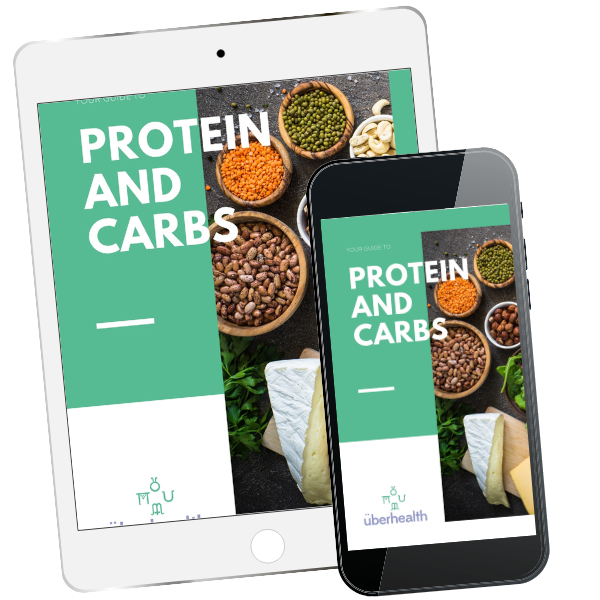The Mid-Life Metabolic Shift: Understanding Perimenopause, Insulin Resistance, and Weight Changes in Women Over 40

As women reach their 40s, their metabolism begins to undergo a profound transformation—one that isn’t simply about “getting older” but is driven by hormonal recalibration, changes in insulin sensitivity, and shifts in muscle and mitochondria function. These metabolic changes can bring unexpected weight gain, energy fluctuations, and increased difficulty managing body composition, even for women who have always maintained a healthy lifestyle.
For health practitioners, understanding the complexities of perimenopause, insulin resistance, and metabolic health beyond the standard "calories in, calories out" model is essential. This article explores the metabolic shifts that occur in women over 40, the mechanisms behind mid-life weight gain, and practical strategies to help women optimise their metabolic health.
Why Women Over 40 Need a Different Approach to Metabolic Health
For decades, most nutritional and metabolic research has been conducted on men or younger women. This science gender gap means that many traditional diet and exercise strategies simply do not translate well to mid-life women.
Why? Because after 40, a woman’s metabolism is affected by:
- The 4 Phases of Perimenopause: Hormones don’t decline in a straight line; they fluctuate in waves, making metabolism unpredictable.
- The Recalibration of the Brain & HPA Axis: The hypothalamic-pituitary-adrenal (HPA) axis adapts to shifting oestrogen and progesterone levels, influencing energy regulation and stress response.
- The Immune System & Inflammation: Low-grade inflammation can increase, affecting insulin sensitivity.
- The Shift to Insulin Resistance: Women become more insulin resistant post-40, meaning the same dietary patterns that worked in their 30s may now contribute to weight gain.
This is why a woman’s metabolism after 40 cannot be approached in the same way as a man’s or even her younger self’s.
The Link Between Perimenopause and Insulin Resistance
One of the most significant yet overlooked metabolic shifts in women over 40 is the increased risk of insulin resistance. This occurs due to:
🔹 Oestrogen Decline – Oestrogen plays a protective role in insulin sensitivity. As levels fluctuate and decline, muscle loses its ability to efficiently absorb glucose, leading to higher blood sugar levels and more insulin secretion.
🔹 More Visceral Fat Storage – Women start to store more fat around the abdomen, even without changes in diet or exercise. This isn’t just a cosmetic concern—it’s a metabolic signal of declining insulin function.
🔹 Higher Cortisol, Lower Sleep Quality – Cortisol becomes more dominant post-40, increasing cravings for refined carbohydrates and contributing to blood sugar instability. Sleep disturbances also further reduce insulin sensitivity.
Key Signs of Insulin Resistance in Mid-Life Women:
- Increased belly fat despite no major diet changes
- Feeling “hangry” between meals
- Mid-afternoon energy crashes
- Increased sugar or carb cravings
- Higher fasting glucose levels (>5.6 mmol/L)
How Practitioners Can Help Reverse Insulin Resistance
- Increase Protein Intake – Higher protein diets help stabilise blood sugar, preserve lean muscle, and keep hunger in check.
- Incorporate Resistance Training – Strength training improves insulin sensitivity independent of weight loss.
- Optimise Meal Timing – Encouraging clients to front-load calories earlier in the day improves insulin response.
- Consider Therapeutic Fasting Approaches – Shorter fasting periods (e.g., 12-14 hours overnight) can support insulin function without overly stressing the body.
- Use Herbal & Nutrient Support – Nutrients like berberine, magnesium, and alpha-lipoic acid support insulin sensitivity.
Why Weight Gain After 40 Isn’t Just About Calories
Many women over 40 express frustration that their usual approach to diet and exercise no longer "works". The reason? Metabolic set-point theory.
💡 Set-point theory suggests that the body defends a specific weight range by adjusting metabolic rate and hunger hormones.
- As oestrogen declines, the set-point often shifts higher unless metabolic flexibility is maintained.
- Caloric restriction alone can worsen this shift by triggering compensatory mechanisms that increase hunger and slow metabolic rate.
The Role of Circadian Rhythms & Meal Timing
A key non-diet factor that affects weight regulation in women over 40 is meal timing and alignment with circadian rhythms.
- Eating within a 10-12 hour window (e.g., 8 am - 6 pm) improves metabolic function
- Consuming more calories earlier in the day supports better insulin sensitivity
- Reducing late-night eating lowers inflammation and blood sugar fluctuations
💡 For practitioners: Rather than only focusing on calorie counting, consider adjusting meal timing strategies to support natural metabolic rhythms.
Weight Loss Strategies That Work for Women Over 40
Not all weight loss strategies work equally well for mid-life women. Here’s a look at some common approaches:
✅ What Works Best:
✔️ High-Protein Diets (1.6g+ per kg body weight) to preserve lean mass
✔️ Strength Training & High-Intensity Intervals to support mitochondria & metabolic rate
✔️ Meal Timing & Circadian Rhythms to enhance insulin sensitivity
✔️ Shorter, Less Aggressive Fasting (12-14 hours) to support blood sugar balance
❌ What’s Less Effective:
❌ Extreme Low-Calorie Diets – Can worsen hormonal imbalances & muscle loss
❌ Extended Fasting (16+ Hours) – May stress adrenal function in perimenopausal women
❌ Low-Carb/Keto for All Women – Can be effective short-term but isn’t always sustainable
❌ Excessive Cardio – Can increase cortisol and reduce lean muscle
🔖 Key Takeaway for Practitioners: Help clients adjust their strategies to align with metabolic needs rather than chasing quick-fix weight loss methods.
The Role of Bioidentical Hormone Therapy in Metabolic Health
Many women wonder whether hormone therapy can assist in managing metabolic changes. While not necessary for everyone, evidence suggests:
- Oestrogen therapy improves insulin sensitivity and reduces visceral fat storage
- Progesterone therapy can support sleep and cortisol regulation
- Testosterone may play a role in muscle maintenance but must be used cautiously
💡 Practitioner Insight: Hormone therapy should be individualised and complement lifestyle changes, not replace them.
Further Education: Helping Women Over 40 Navigate Metabolic Health
For practitioners who want to gain a deeper understanding of mid-life metabolic shifts, the "Metabolic Health and Vitality for Women Over 40" training provides evidence-based, practical strategies.
What You’ll Learn:
- The science behind perimenopause and insulin resistance
- Effective nutrition and training strategies for mid-life metabolism
- How to assess and support hormonal, mitochondrial, and muscle health
📌 Access the training here: Metabolic Health and Vitality for Women Over 40
Final Thoughts: A Smarter Approach to Mid-Life Metabolism
Women over 40 don’t need more diet rules or extreme exercise plans—they need targeted strategies that align with their changing physiology. By focusing on insulin resistance, metabolic flexibility, muscle health, and meal timing, practitioners can empower clients to take control of their metabolic health with confidence.
FREE RESOURCE


